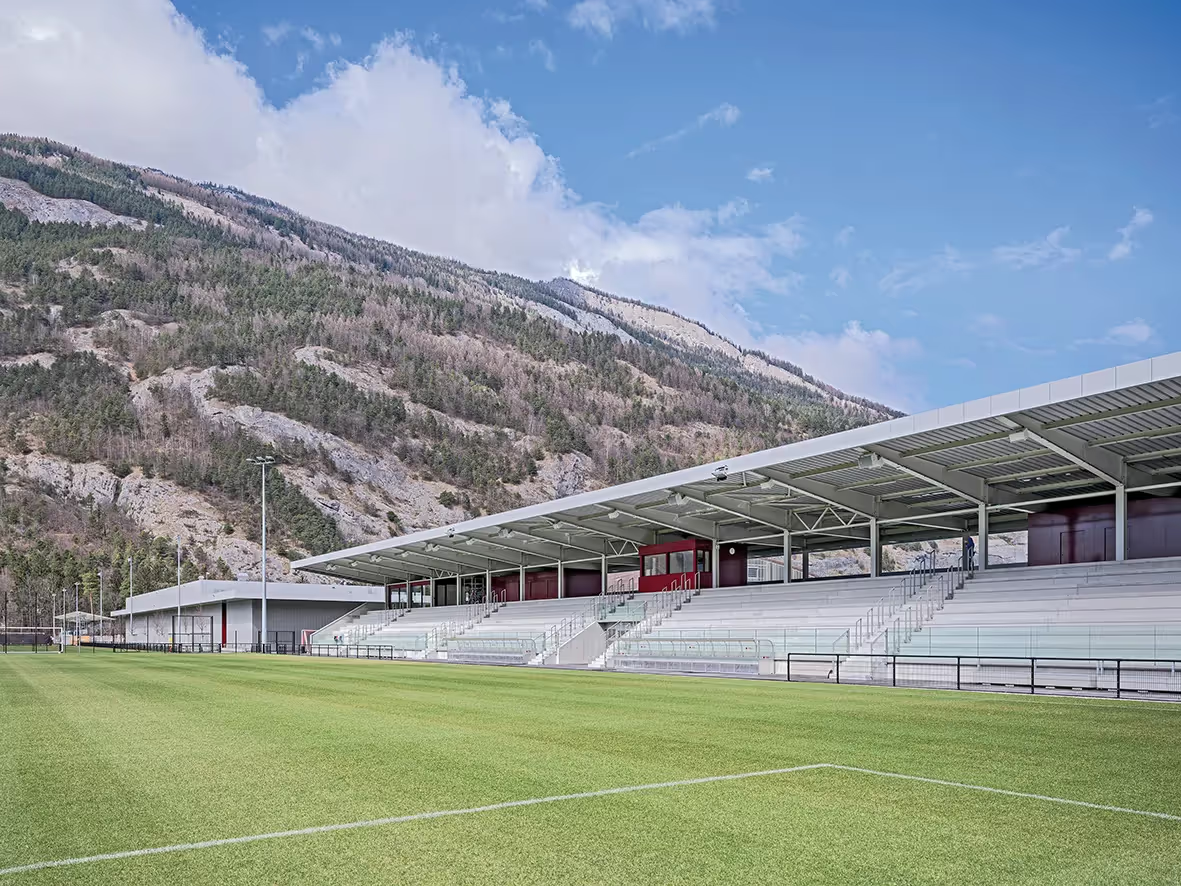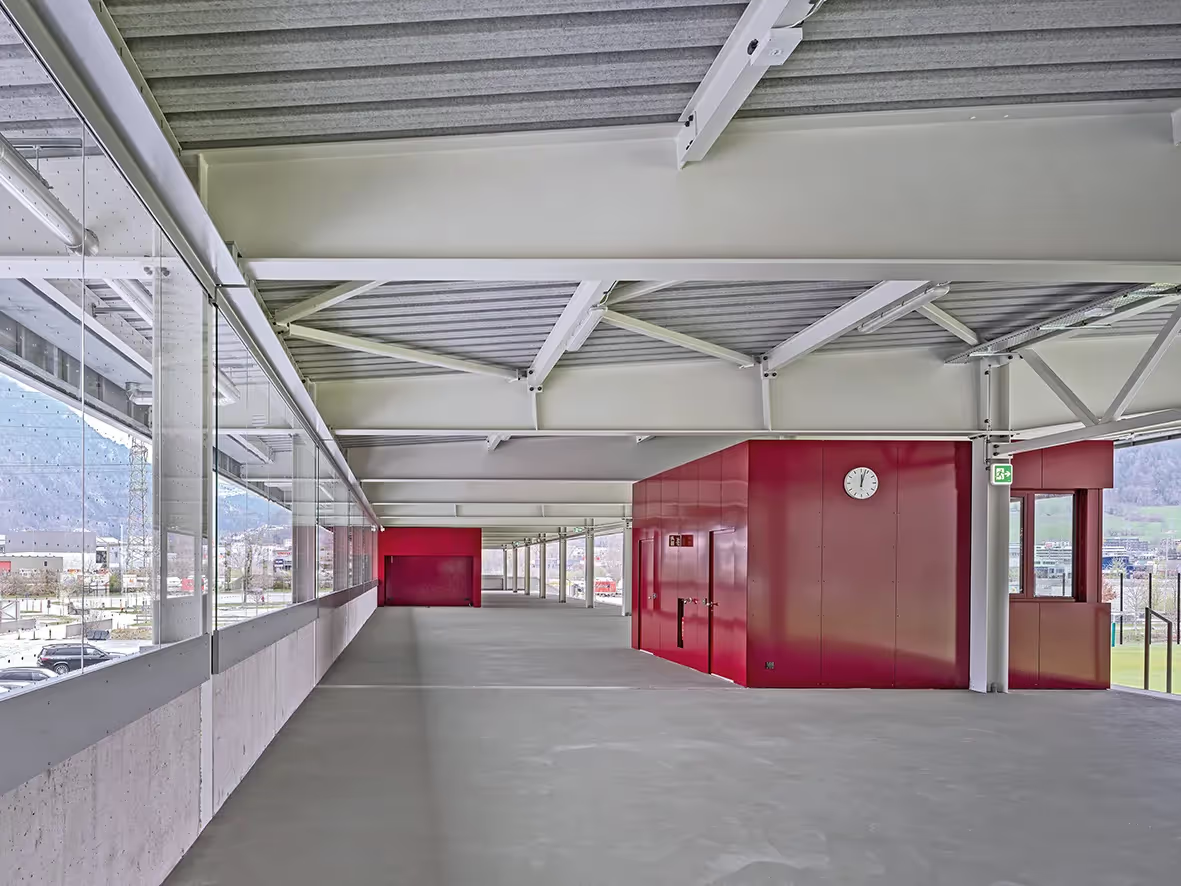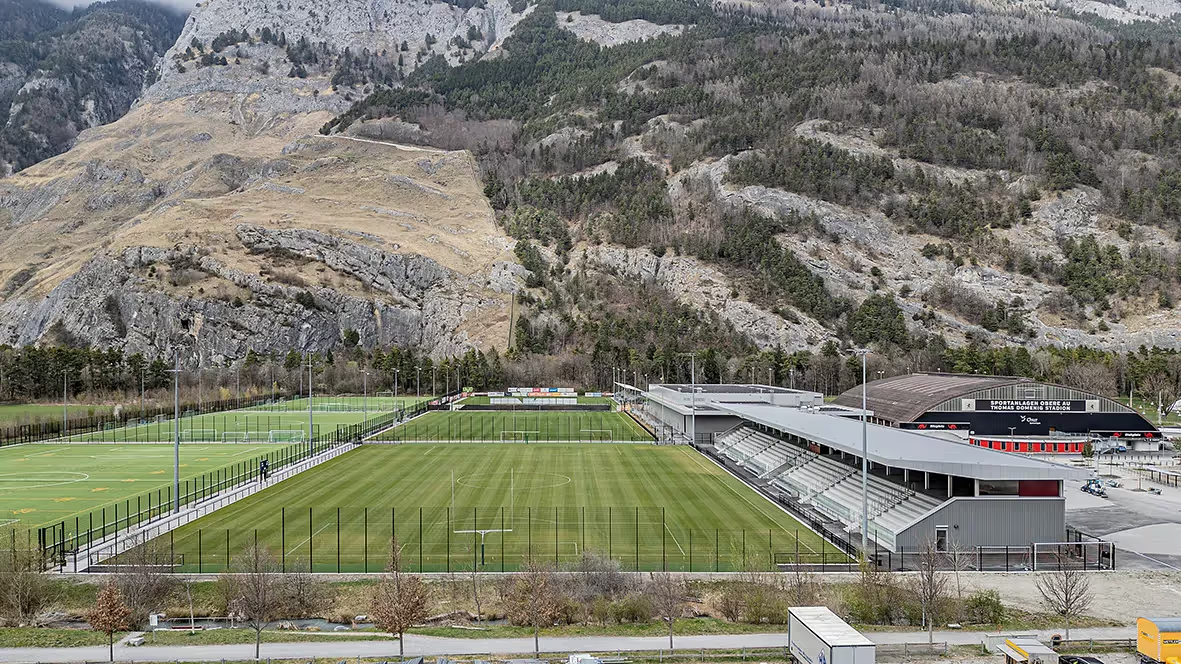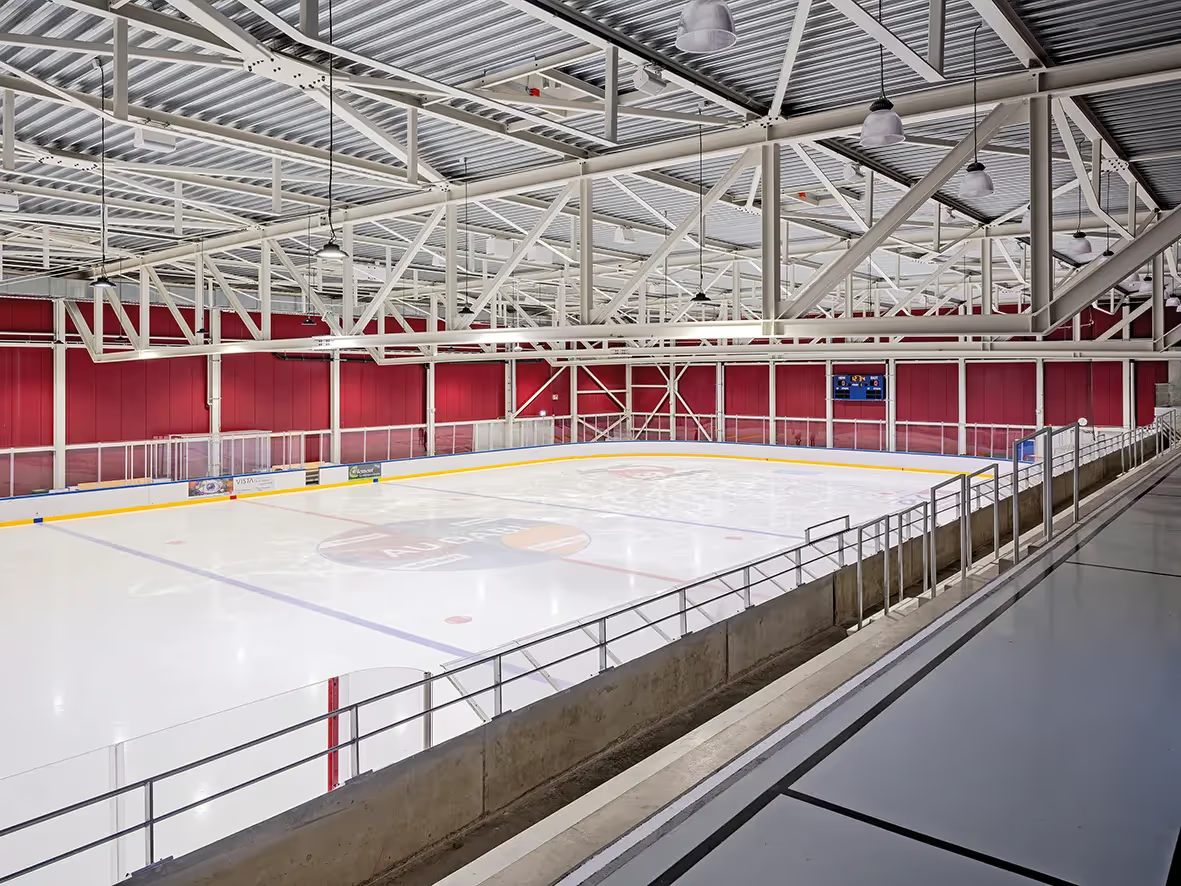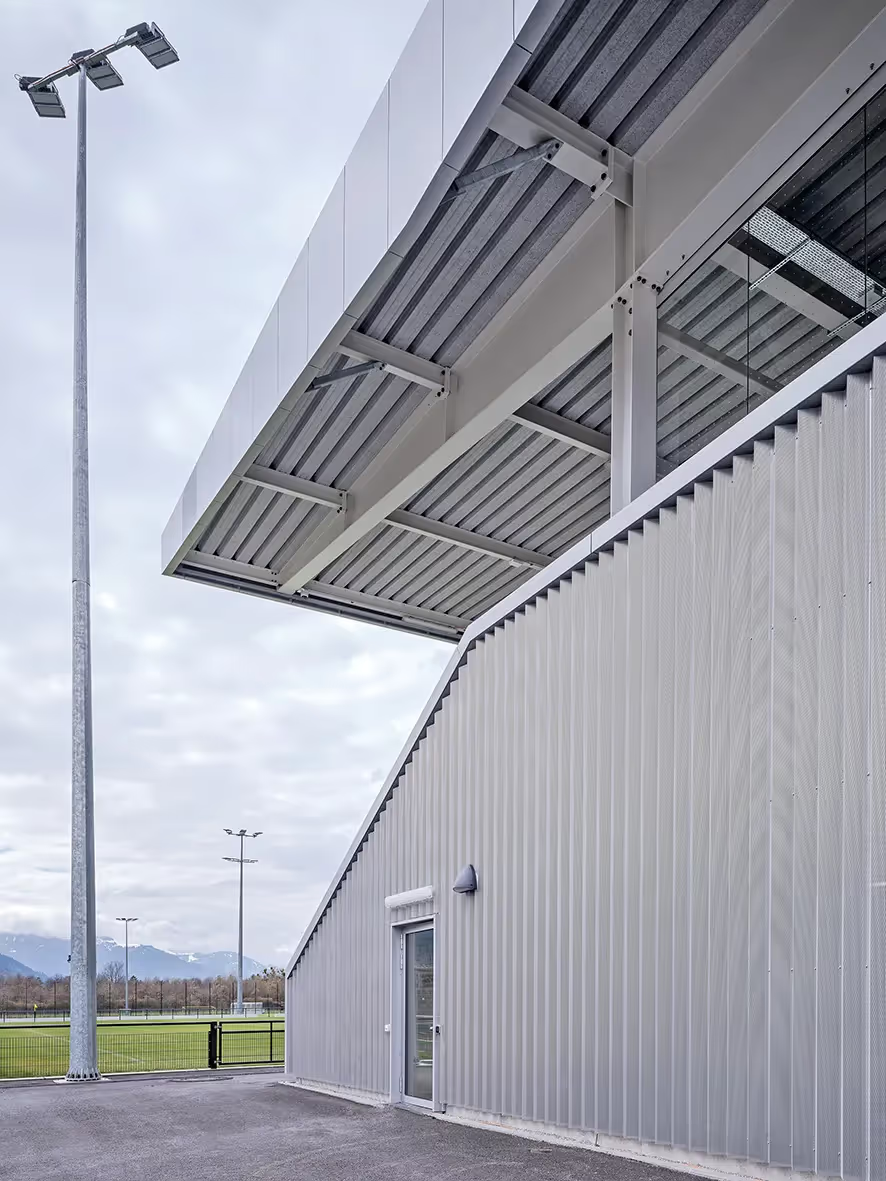HISTORY/LOCATION
The Obere Au is situated on the right bank of the Rhine above the confluence with the Plessur, about two kilometres northwest of the city centre of Chur. An extensive sports facility has been located between the river and the A13 motorway since the early 1970s. It includes an outdoor and an indoor swimming pool as well as Thomas Domenig Stadium, the home of EHC Chur.
In order to expand and modernise the sports facilities, the city of Chur commissioned a master plan for the Obere Au site. In 2017, a selective public tender for an end-to-end service contract was announced. The participating teams had the task of planning a training ice rink, a stadium with a main pitch (natural turf) and four natural turf pitches for the Obere Au site. The master plan envisaged two rectangular construction sites for the training rink and stadium, oriented in relation to Thomas Domenig Stadium. They extend directly southwest from it, with a narrow space separating their narrow ends. They delimit the adjoining grass playing fields. The end-to-end service team led by HRS Real Estate AG won the tender with the “Eisball” project.
CONCEPT/ARCHITECTURE
The two long buildings with flat roofs are aligned in a row on the side of the pitch and have the same height (10 metres). The existing Thomas Domenig Stadium towers over them. The 100-metre-long, 40-metre-wide training rink is self-contained, in keeping with its purpose. Its steel construction with large spans is covered with perforated zigzag sheet metal, with windows behind it. A canopy around the circumference of the building marks the end of the simple structure and connects the ice rink with the two-storey cloakroom area with basement to the south. The canopy is designed to function like a hat atop the building, serving both as weather protection and as a distinguishing feature. The ground-level entrance in the southeast corner leads to the cloakrooms, offices and the spectator area. A small grandstand can be accessed directly via a staircase. The upper floor houses the club and training rooms, a fitness area and the building technology.
The stadium, which has no basement, is a rectangular building with a grandstand that rises from the ground level to the upper floor. The roof is suspended above the stands. It has a monolithic, exposed steel structure, with 18 columns rising up in the concourse area behind the top row, allowing an unobstructed view of the entire pitch. Tensile-loaded steel beams in the rear-facing façade complete the roof structure.
The grandstand itself is a solid construction. Its enclosed areas are clad with perforated zigzag sheet metal, like the training rink. Below the stands and the concourse area on the first floor are the cloakrooms, administrative rooms and the ticket office in the northeast corner. The entrances are located on the narrow ends. An elevator by the rear façade and stairs between the sections of the stands connect the ground floor with the upper floor. Pavilion-like timber constructions with toilets, press rooms and a small club room are located in the concourse area above the stands and under the circumferential roof. Glass between the pavilions offers protection against the weather.

